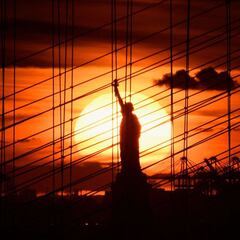Daylight saving time: What time do we change the clock?
Tonight, most clocks will adjust to daylight savings automatically, but for all those that need to be manually programmed, here are the details you need.

Tonight, from Saturday, November 6th to Sunday, November 7th, the majority of clocks in the United States will have to be pushed back an hour. Nowadays, most clocks will adjust to daylight savings automatically. At 2 AM on Sunday 7 November, the clock will adjust back one hour to 1 AM.
Of the two days a year where the time changes, the November event is much more favorable as it allows for an additional hour of sleep. However, it also means that the colder months are approaching and the days will become shorter.
It's time to "fall-back" and turn the clock back an hour, tomorrow Sunday, November 7th ⏰ It's crucial to ensure those who take time-sensitive medications prepare for daylight savings to avoid missing a dose. #daylightsavings #medication #health pic.twitter.com/Uv8vdqLEi4
— GeniusRx (@genius_rx) November 6, 2021
A brief history of Daylight Savings
In the United States, the idea of Daylight Savings is attributed to Benjamin Franklin who in 1784 proposed the idea to help people conserve candles.
Which US states and territories do not take part in Daylight Savings?
- Arizona
- Hawaii
- American Samoa
- Guam
- the Northern Mariana Islands
- Puerto Rico
- United States Virgin Islands.
However, in 1966 the federal government standardized the practice that has been in use since. Twice a year, once in March and then November, the clocks are moved one hour forward or back to ensure residents can maximize sunlight. This bill was written to "promote the adoption and observance of uniform time within the standard time zones." The dates for the time to be changed have changed since the bill was passed, but the practice remains.
Arguments against Daylight Savings
Some experts believe that it is time we abandon the practice because it does not provide the same benefits that it once did and can actually cause problems. For example, some researchers have shown that time changes and lead to additional car accidents, heart attacks, and miscarriages because of the additional stress caused by the change.
Related stories
Many experts attribute these issues to the changes in people's sleep patterns during daylight savings. A Washington Post article arguing that Daylight Savings should be abolished cited a University of Colorado at Boulder study which found that in the days after the March time change, where most people lose an hour of sleep, fatal car accidents increased six percent. Another study found that around six hundred car accidents over a twenty-two-year period could have been reported if Daylight Savings time had been eliminated.
Additionally, the dusk to dark campaign estimated the decrease in productivity caused by the springtime change costs the US around $1.5 million.

